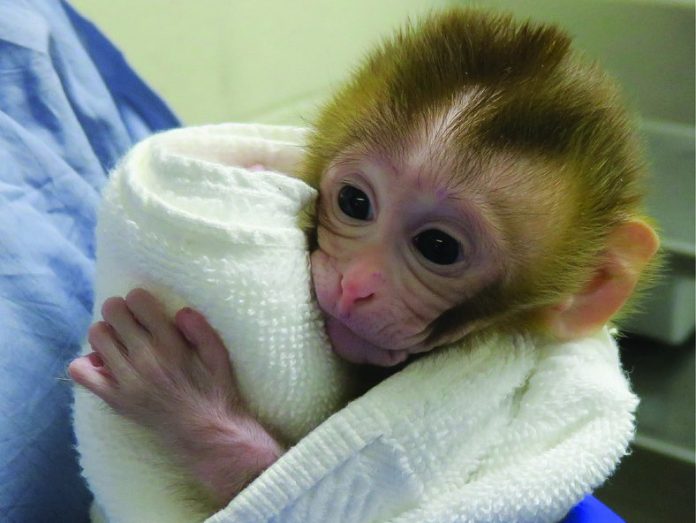While a frozen testicle being kept in cryogenic storage for future use sounds like something out of a science fiction story, the work done by these scientists is anything but that.
In what is being hailed as a substantial medical breakthrough, a baby Rhesus macaque, better known as a monkey, has been born from the sperm of a frozen piece of testicle. Rather than sex providing the seed necessary, the Rhesus macaque named Grady was produced under laboratory conditions.
Rather than typical in vitro fertilization involving the transfer of adult sperm from a sexually mature male, the sperm responsible for making Grady came from frozen testicular tissue pulled from castrated pubescent males. Yes, whole testicles harvested from test subjects were frozen, kept on ice, and later used to create new life. Science is amazing, ain’t it?
An abstract of the research paper published by Science Magazine provides “the proof of principle that cryopreserved prepubertal testicular tissues can be autologously grafted under the back skin or scrotal skin of castrated pubertal rhesus macaques and matured to produce functional sperm.”
The text goes on, stating that “during the 8- to 12-month observation period, grafts grew and produced testosterone. Complete spermatogenesis was confirmed in all grafts at the time of recovery. Graft-derived sperm were competent to fertilize rhesus oocytes, leading to preimplantation embryo development, pregnancy, and the birth of a healthy female baby.”
In other words, testicle samples were removed from various male macaques, later being stored away. The frozen samples were then thawed after the castrated Rhesus macaques had undergone a chemo regimen, and the testicular samples were implanted in both their scrotums and backs.
Then, in what was probably a surprising result, those samples produced live, viable sperm.
However, the process wasn’t all fun and games. Despite managing to fertilize 138 eggs with said sperm, only 11 embryos made it far enough along to be considered viable. And of those 11 embryos, only one managed to make it all the way to birth – Grady, a female, being the result.
“You can’t believe how proud I was… It took us a lot of years,” Kyle Orwig, professor of obstetrics, gynecology, and reproductive sciences at the University of Pittsburgh School of Medicine, said in the journal findings. “It was a big undertaking. And we produced a baby in a way that nobody has ever produced a baby before.”
A report from The Verge points out exactly how important this achievement is. In the future, young boys and teenagers subjected to chemotherapy after a cancer diagnosis might be able to freeze tissue that’s good for future use to produce viable sperm.
Baby Grady is a clear sign that scientific research has taken a step in the right direction.








